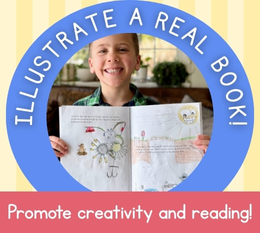The Old Schoolhouse® Product & Curriculum Reviews
With so many products available we often need a little help in making our curriculum choices. The Old Schoolhouse® Magazine family understands because we are in the same boat! Do you need more information on a product before you buy? With over 5,500 products listed in 52 easy-to-use categories, much of the information you need to know is only a click away! Let our reviewer-families help yours.
The Human Body: 25 Fantastic Projects Illuminate How the Body Works Review by Deborah Burt
By Kathleen M. ReillyNomad Press
2456 Christian Street
White River Junction, VT 05001
802-649-1995
http://nomadpress.net/
The Human Body: 25 Fantastic Projects Illuminate How the Body Works is a fabulous resource for learning about the basic systems of the human body. Designed to be used by students ages 9 and up, The Human Body consists of more than 100 pages of engaging writing, interesting diagrams and illustrations, and hands-on activities.
The Human Body is broken down into 11 short chapters on the following subjects: Circulatory System, Respiratory System, Digestive System, Muscles, Bones, Cells, Skin, the Brain, Senses, Reproduction, and Diseases & Immunity. The basic subject overview provided in each chapter is conversational and easy to understand. The graphic layout of the text is very easy on the eyes, with different styles and sizes of fonts as well as supplemental boxes, charts, and diagrams full of interesting factoids. Each chapter provides definitions for vocabulary under the heading "Words to Know." A glossary in the back of the book lists the important vocabulary words used throughout the text. The hands-on projects are one of the most valuable components of this book. Each chapter has between 2 and 5 projects designed to cement the concepts into the child's understanding. The projects can be done with household or easy-to-obtain items.
Our family likes doing hands-on projects in group settings, so we invited two of our cousins to join us in going through this book. Our "class" consisted of five boys ages 5, 8, 10, 13 and a 16 year old with learning disabilities. We met two times a week for an hour and a half each time and were able to complete one lesson with each meeting. The boys listened to me read the text aloud to them and then we tried the hands-on activities together.
Take a peek into our lesson time on the Respiratory System. I read aloud to the kids for about 10-15 minutes about the lungs, nose, trachea, diaphragm, breathing in and breathing out, and why sometimes people have trouble breathing (smoking, allergies, etc.). The chapter provided little boxes of information on Alveoli, Hiccups, and Asthma and a section of vocabulary words to learn, which we also read aloud. This chapter recommended two hands-on projects and we decided to try both of them. The first one, Make Your Own Model Lung, looked really neat but didn't work for us. We also tried our hand at Make Your Own Magic Air Ball. This project worked perfectly and was fun for the kids to make and fun for them to play with!
The Human Body could be used in a myriad of different ways. I think the most useful way homeschoolers of all educational philosophies can utilize this text would be as a supplement to their regular science curriculum. This text is not thorough enough to be used as more than an introduction to the study of the human body, but the projects are fun and fairly easy to do. This book would be of particular interest to unschooling or delight-directed families with a child interested in learning about the human body. This would be a great book to give a kinesthetic 9 to 12-year-old boy to do independently--keeping him busy (and learning)!
Although the text is not Christian in worldview, it does not mention evolution. For those concerned about the chapter on Reproduction, I am happy to report that the authors covered the subject tastefully and without much intimate detail at all. They chose to focus on the development of babies within the womb and DNA/heredity. You don't have to worry about your child discovering anything explicit here!
My only complaint about this book probably has more to do with me than the book itself. A few of the projects did not work well for us, usually because one of the supplies was somehow not the right fit. I think the authors could have been a bit more specific in explaining what supplies were required. For example, one project required "large, party-sized balloons." The balloons I purchased said "party size" on the package, but they were too small for the project. It would have been nice to know the specific type of balloon needed.
Overall, I was quite pleased with The Human Body: 25 Fantastic Projects Illuminate How the Body Works. We enjoyed the hands-on projects. Even the projects that did not turn out perfectly still provided us with a learning experience. If you are looking for hands-on projects or a book that can be read independently by your student to supplement a study of the human body, look no further.
Do you want to get the word out about your product or service to the homeschool community? Email TOS Advertising & Sales Director, Jenny Higgins, and share a little about what you´d like showcased, and we can help with that! Also, check out the magazine’s media kit and rate card at www.Homeschool.Market.












































